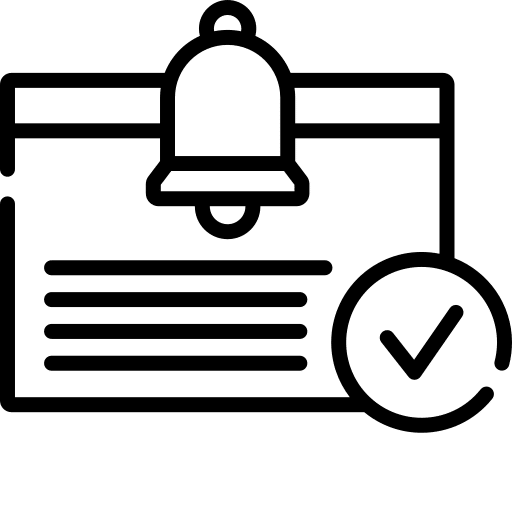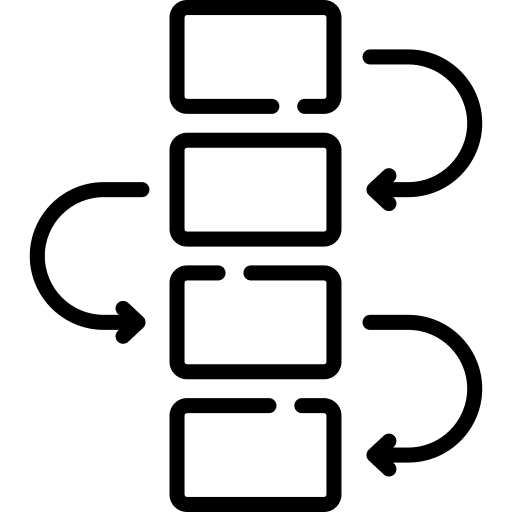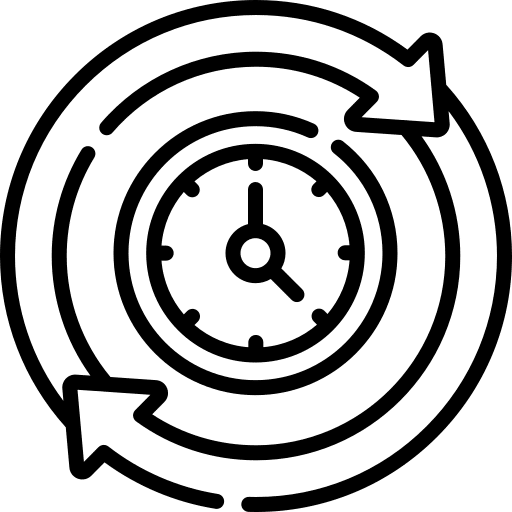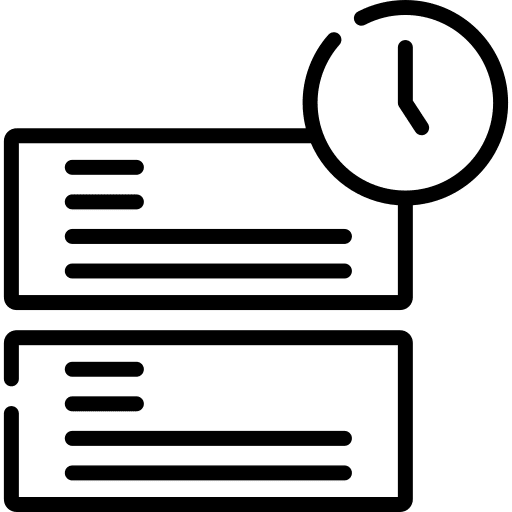Start a Program
NAACLS is committed to being the premier accreditation agency for ensuring the advancement of education in clinical laboratory sciences and related health care disciplines provided by domestic and international programs.
So, you want to start a NAACLS Accredited program?
Before you get started, there is something we should make clear. NAACLS is here to help. We seek to be an active partner in the accreditation process with programs. As one of our volunteers expertly put it, we’re not here to get you… we’re here to get you through it.
Click here for information on starting a non-USA Program
What does that mean?
The NAACLS Board of Directors has a set of high standards we are confident will result in a workforce that will help improve healthcare outcomes worldwide. Although the expectations appear to be high, we’re prepared to help you through this journey and ensure you have the necessary resources to meet those standards.
Before we continue, there is one more thing about NAACLS you should know.
The board of directors is committed to accreditation that not only ensures high quality but also provides the space for programs to be creative and innovative. NAACLS takes all steps possible to avoid overly prescriptive standards and processes. There are over 600 NAACLS Accredited programs and nearly as many ways to demonstrate compliance with the Standards.
Where do I begin?
Start with the NAACLS Standards and Guide to Accreditation. All quality decisions come back to the Standards. No doubt, the Standards will lead to questions and maybe a bit of anxiety. Therefore, after you review the Standards and Guide to Accreditation, we suggest reaching out to NAACLS Program Services for help and personalized service.
When speaking with a member of our NAACLS Program Services Staff, they will let you know of essential resources available to you:
When do I begin?
This will vary by program discipline. NAACLS Program Services can discuss your program more specifically and help you establish a calendar that works for your situation. If you are a BMS, DCLS, or a non-USA program, we recommend contacting NAACLS Program Services before starting to fill out your application materials as there are different standards and processes to follow.
A key variable to this timeline is determining when a program seeks to achieve Serious Applicant Status (SAS). We’ll get into more detail about the timing of SAS below, but first, let’s discuss the benefits of this status. Serious Applicant Status is a pre-accreditation status that, once met, allows graduates to sit for certification exams. This is a huge benefit for students and the program. Not only does NAACLS Accreditation and SAS provide the most accessible pathway for certification exam eligibility, but statistically, it is shown to be the best way to prepare for certification exams.
Please refer to the sample timeline detailed below. The NAACLS Guide to Accreditation will provide more detail for each step as well.
The NAACLS Accreditation Process
For your convenience, we’ve put together an outline to help you stay on target:
Applying
Remember to first review the Standards and reach out to NAACLS Program Services so we can help.

Complete the NAACLS Accreditation Application Packet.
The Accreditation Application Packet gathers essential contact information about the program and provides materials to helps us determine if the program has a reasonable chance of meeting the Standards. The application packet with fee must be accepted before the program can submit the self-study.

Submit the NAACLS Accreditation Application Packet.
Something important to remember is that NAACLS relies on volunteer content experts to complete all reviews. As a result, it may take up to two months to receive any review.

Pay the application fee.
Once NAACLS receives the Accreditation Application Packet, we can gather the information necessary to develop an invoice. Our accounting department will contact you directly to provide all the essential details.

Submit your application packet review response.
An important part of the NAACLS process is we always give you an opportunity to respond to a review. If you didn’t submit everything correctly the first time, please reach out for help and try again.

Contact program services to discuss the review and next steps.
If you need help understanding certain aspects of your review, now is the perfect time to contact a DLP!
Self-Study Report
Congratulations, your application packet was accepted! Now you have the opportunity to introduce your program to NAACLS and let us know how great it is!

Set the self-study due date.
You will want to discuss this with NAACLS Program Services. We recommend targeting three months before your first class graduates as a due date or if you already have classes graduating, pick a class you wish to be eligible to sit for a certification exam and use their graduation date as a target to submit the Self-Study Report.

Begin working on the Self-Study Template.
The self-study is an in-depth internal review of your program. Give yourself some time, maybe up to a year.
Check the NAACLS News and website to see if there is any information on a workshop! NAACLS hosts at least two workshops a year to provide support to program directors.
Contact a DLP or NAACLS Program Services if you need help!

Submit your self-study.
Celebrate! You’ve reached Serious Applicant Status! NAACLS doesn’t need to review or “approve” the self-study. As soon as we receive your self-study, your program will be awarded with Serious Applicant Status! This is also the point where you will be invoiced a prorated accreditation fee.

Review of the Self-Study Report.
Remember, we give our volunteer content experts up to two months to thoroughly review your materials. Therefore, it may be a bit before you hear back from us.

Respond to the Self-Study Review.
We all know that laboratorians are high achievers and no doubt you expect everything to come back perfect. However, it is rare that a review comes back “clean.” Your Self-Study Review will identify the reviewers’ concerns at this point in your review process. You will have approximately one month to gather the information you need to respond to the Self-Study Review even if you agree with the reviewers’ findings.
Site Visit
A crucial part of the accreditation review process is the site visit. For initial programs, NAACLS sends three content experts to review the program on-site.
This may sound intimidating and stressful, but the site visit is your opportunity to showcase your program in person to NAACLS. Our site visitors aren’t there to look in every drawer and read every email, hoping to find a mistake. The site visit team is there to check a few site-specific items, talk to your faculty, students, and advisory board, and see if those concerns about your self-study are now compliant. They are volunteers committed to quality education sent to help your program get accredited.

Set your site visit dates.
Setting the dates is the first step in getting ready for your site visit. Your NAACLS Program Accreditation Coordinator will be your point person for this step. Site visits are approximately six months after your self-study submission. Your program accreditation coordinator will recommend a team for your visit based on your proposed dates. You may reject a team for any reason, though a rejected team may mean a delay in finalizing site visit details.

Prepare your materials.
The good news is you’ll have about six months to prepare for your site visit after submitting your self-study. Even better, for every standard in the NAACLS Standards Compliance Guide, there is a section dedicated to what is needed during the site visit. Additionally, your program accreditation coordinator will provide you with the Site Visit Report the visiting team completes for your program.

Review NAACLS resources.
As you prepare for your site visit, remember you have many resources to turn to for help. NAACLS has DLPs to assist with standard interpretation, program services to assist with the process, and the NAACLS News content dedicated to suggestions for hosting a site visit.
We also recommend reviewing the Volunteer Manual. Similar to providing access to the Site Visit Report and the Self-Study Review, we provide access to our Volunteer Manual. All the material used by our reviewers is available to you, which in turn, can be used to prepare as you see fit.

Host the site visit.
Please remember our NAACLS Site Visitors are volunteers who are educators themselves. They are resources for you in NAACLS Standards and laboratory science education in general. Site visitors are your colleagues – they want to see you succeed!

Review of the Site Visit Report.
The last part of your site visit is a preview of the Site Visit Report completed by the site visitors. NAACLS focuses on transparency through this process and attempts to avoid any surprises. You will receive the Site Visit Report from your NAACLS Program Accreditation Coordinator. Are there outstanding concerns? That’s okay! It’s common to have final items to clean up at the final stages of the process. You will have an opportunity to respond to all outstanding concerns.

Submit the Site Visit Report Response.
NAACLS must receive a response to the site visit report whether there are concerns listed. Once that’s completed, you are finished for now. Congrats! After you submit the site visit report response, there are no more opportunities to provide materials. Now it is NAACLS turn to get to work.
Review Committee and Board of Directors
There are many sets of eyes that look at your materials. At this point of the process, there have been application packet reviewers, self-study reviewers, and site visitors. In this final stage, the review committees thoroughly review the materials.

Review committee review.
Our review committees are comprised of 10-18 volunteers who are experienced NAACLS content experts, practitioners, and educators. They know their stuff. NAACLS depends on committee members to comprehensively review all documents from programs in the current accreditation cycle. During their bi-annual meetings, they discuss every program at length before recommending an accreditation award to the board of directors.

Quality Assurance (QA) review.
Our QA Committee is a standing committee of the NAACLS Board of Directors. Its members review all recommendations to ensure NAACLS applies the Standards consistently and accurately throughout our accreditation cycles.

Recommendation sent.
Once QA has reviewed the recommendation, it is ready for the board of directors, but it is also ready for you. NAACLS Program Accreditation Coordinator will send you a copy of this recommendation.
If you feel there has been a specific misapplication of NAACLS Standards (or non-application) or an inconsistency with established procedures, you may start the appeals process. Our full appeals process is in the NAACLS Guide to Accreditation.

Board of directors review.
The board is the final decision-maker for all policies and accreditation decisions. They will review the accreditation materials before a final award decision.

Award sent.
NAACLS Program Accreditation Coordinators will send you the final accreditation award, which we will proudly post on our website. We recommend you review your award and pat yourself on the back and exhale. We know the process can be overwhelming at times and may take eighteen to twenty-four months. Just remember, the NAACLS Community wants our programs to meet the Standards, achieve accreditation, and stay accredited.

Progress Report.
As an initial program, we will require a Progress Report in two years.
Sample Timeline
When thinking about timelines, it’s best to work using the date from your current cohort or first graduating class. In the NAACLS world, the Board of Directors meets twice a year in April and September to determine program award lengths. Therefore, we will begin with an April 2028 board meeting and work backwards from there for this example.
|
Date |
Action |
|---|---|
|
April 2028 |
The NAACLS Board meets to determine the final award length. |
|
March 2028 |
NAACLS Program Services provides programs with their recommendation letter. |
|
February 2028 |
NAACLS Review Committee meets to determine the program’s recommendation to the board. |
|
Fall 2027 (September to November) |
Program’s initial site visit occurs. |
|
May 2027 |
1st class graduates or current cohort graduates. |
|
March 2027 |
Your program’s self-study is due to the NAACLS Office. NAACLS Staff recommends the self-study be submitted three months prior to the first graduating class to allow for processing time at NAACLS and notifying the credentialing body. |
|
March – May 2026 |
Submit your Accreditation Application Packet. You have three attempts to obtain application packet approval within one year. Once your Accreditation Application Packet has been approved, you can begin working on your self – study. This gives you about one year to work on the self-study, which is roughly the same timeline our continuing programs use to complete their self-study as well. |
|
January – March 2026 |
Gather your supporting documentation and complete the Accreditation Application Packet. Meet with your NAACLS Program Accreditation Coordinator for Accreditation questions. |
Ultimately, this is a rough timeline for initial programs. It can go faster or slower based upon your time and the approval of the Accreditation Application Packet. The goal is to achieve Serious Applicant Status prior to your first graduating class.


